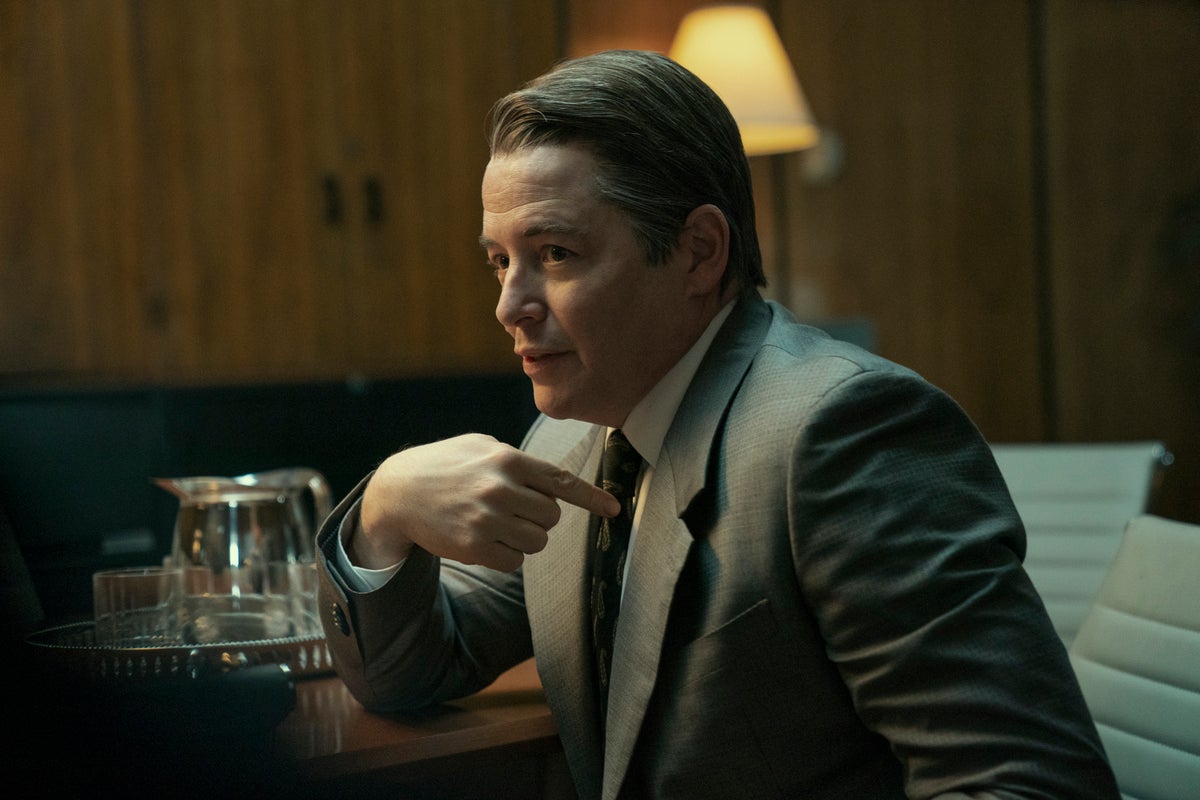
In 1999, America had fewer than 10,000 deaths related to opioid addiction. In 2021, it had more than 80,000. This rampant rise has been labelled the “opioid epidemic”, a crisis affecting predominantly poor, rural communities, where manual labourers have been hooked on prescription drugs, issued by overzealous doctors working on commission. And within this black-market pharmacy, there is one pill that has come to define the era: OxyContin, a slow-release form of oxycodone. Painkiller, a new Netflix six-parter, charts the rise of Oxy – and the fall of America.
At the heart of the story is the Sackler family, owners of Purdue Pharma, whose name adorned cultural institutions from the National Gallery to Oxford University, and its symbolic head: Richard Sackler (Matthew Broderick). But this isn’t the story of how the Sacklers arrived in America, as Jewish immigrants at the start of the 20th century. Instead, we pick up the history as prosecutors swirl. Low-level bureaucrat Edie Flowers (Uzo Aduba) is brought in by the prosecuting team, who have already deposed Richard, to lecture on the history of the Sackler dynasty, their control of Purdue Pharma and the rise of OxyContin. A composite character, her purpose is to explain the threads of the narrative: the family who built the drug, the doctors and sales reps who peddled the panacea, and the patients who, through malpractice, become victims.
In the first strand, Broderick portrays Richard (a character depicted with memorably showy huskiness by Michael Stuhlbarg in Hulu’s 2021 drama Dopesick) as the pompous, cartoonish villain of the piece. He stomps around the shadowy Sackler meet-ups, saying things like, “I love cancer but the numbers don’t add up!” Then there are the dope-pushers, like teenager Shannon (West Duchovny), who flirt their way into the surgeries of venal doctors (“You’re dangerous and you’re dumb,” one, less corruptible, practitioner tells her. “That makes you even more dangerous.”). And, finally, there’s the token patient, Glen (Taylor Kitsch), whose journey from middle-class mechanic to addict we follow through the season. These are the archetypes used to illustrate Edie’s PowerPoint presentation.
Where Dopesick was a sombre and, at times, harrowing portrait of the opioid crisis, Painkiller attempts to differentiate itself through what might be called the Adam McKay School of Fast Editing and Visual Metaphor. Like The Big Short or Vice, Painkiller takes a grave subject and adds the crackle of Pop Rocks. “We’re big game hunting,” attorney Brianna (Ana Cruz Kayne) tells Edie, with relish. Adjusting to these gear shifts might require a degree of cognitive dissonance. It’s a tension that the show is fully aware of: each episode opens with often heart-breaking, real testimony from actual families impacted by the rise of OxyContin. But then it’s straight into the drama. The opening episode runs directly from a mother talking about her son’s overdose in a car park to a slapstick scene where Matthew Broderick stalks his mansion searching for a rogue fire alarm.
The result is a tonal muddle. Directed by Peter Berg, best known for brash, dumb action thrillers like Battleship, Lone Survivor and Deepwater Horizon, it has nothing like the nimbleness or vivacity of McKay’s work. Nor does it have the gravitas of Dopesick. It is a fiery, urgent piece, unsettled by a thin narrative and sketchy characters. Adapted both from a New Yorker piece by Patrick Radden Keefe (whose book, Empire of Pain, is the canonical text on the Sacklers) and the book Pain Killer, by The New York Times writer Barry Meier, the expository, detached tone often feels more like journalism than drama.
“If we become the gatekeepers for everyone who wants to get away from pain,” whispers Richard, explaining his dastardly plan, “then we have changed the world.” Painkiller is far more a story of cause than effect. Abuses at the top are rendered in primary colours, even if the impacts, at the bottom, are washed out. After Dopesick, which trod remarkably similar ground, it’s hard to argue that we needed another depiction of the tripartite collusion of pharma, clinicians and victims. This is a story told more comprehensively, convincingly, and, crucially, movingly, elsewhere.







